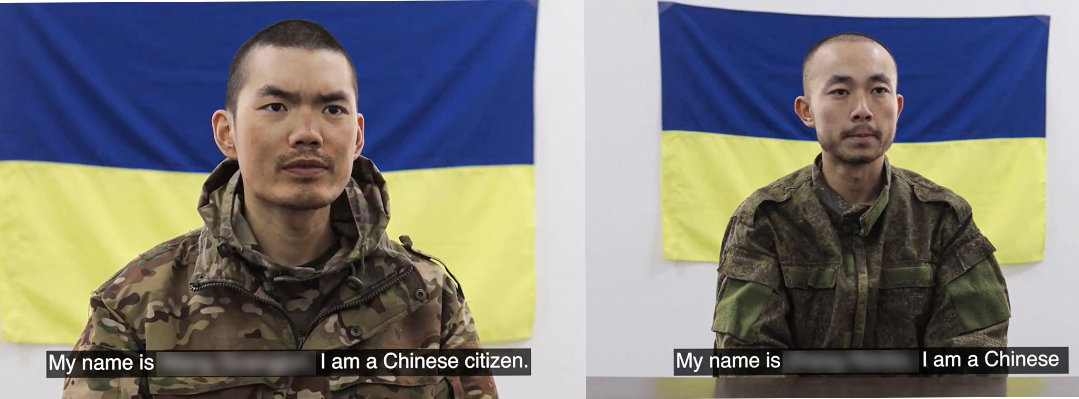KYIV: Russian officials said Wednesday they were fighting off Ukrainian cross-border raids in a southwestern border province for a second day, as Kyiv officials remained quiet about the scope of the operation.
Russian President Vladimir Putin described the incursion into the south-western Kursk region as a “large-scale provocation” and said he will hold a meeting with top defense and security officials to discuss the situation.
“The Kyiv regime has undertaken another large-scale provocation and launched indiscriminate shelling of civilian buildings, residential houses, ambulances with different types of weapons,” Putin said at a meeting with Cabinet officials. He instructed the Cabinet to coordinate assistance to the Kursk region.
The head of the Kursk region urged residents to donate blood due to the intense fighting.
“In the last 24 hours, our region has been heroically resisting attacks” by Ukrainian fighters, acting governor Alexei Smirnov said on Telegram, adding that all emergency services were on high alert.
If confirmed, the alleged cross-border foray could draw Russian reserves to the area, weakening Moscow’s offensive operations in several parts of Ukraine’s eastern Donetsk region where Russian forces have increased attacks to make the most of the summer fighting season.
But it could risk stretching outmanned Ukrainian troops further along the front line, which is more than 1,000 kilometers (620 miles) long.
Russian forces have swiftly repelled previous cross-border incursions, but not before they caused damage and embarrassed authorities.
The Russian Defense Ministry said Tuesday that up to 300 Ukrainian troops, supported by 11 tanks and more than 20 armored combat vehicles, had crossed into Russia and suffered heavy losses.
It said Wednesday that military and border guard troops “continued to destroy Ukrainian military units in the areas alongside the border in the Kursk region.”
The ministry said Russian forces backed by artillery and warplanes “didn’t allow the enemy to advance deeper into the territory of the Russian Federation.”
Ukrainian officials declined to comment, and it wasn’t possible to verify the Russian claims.
Open-source monitors have not been able to verify the claims. The US-based Institute for the Study of War could not verify whether geolocated footage of damaged and abandoned armored vehicles 7 kilometers (4 miles) north of the border west of Lyubimovka, in the Kursk region, were Ukrainian.
The think tank also cast doubt on footage shared by Russian military bloggers claiming to show the aftermath of the Ukrainian raids. Most of the damage shown “appears to be the result of routine Ukrainian shelling and does not indicate that there was ground activity in the area,” it said in its daily report.
Responsibility for previous incursions into Russia’s Belgorod and Bryansk regions have been claimed by two murky groups: the Russian Volunteer Corps and the Freedom of Russia Legion, which are made up of Russian citizens and have fought alongside Ukrainian forces.
Disinformation and propaganda have played a central role in the war, now in its third year.
Some Russian war bloggers who have proved knowledgeable about the war said that Ukrainian soldiers were in Kursk.
Rybar, a Telegram channel run by Mikhail Zvinchuk, a retired Russian Defense Ministry press officer, said Ukrainian troops had seized three settlements in the region and continued to fight their way deeper into it.
Another pro-Kremlin military blog, Two Majors, claimed that Ukrainian troops had advanced up to 15 kilometers into the region.
Neither claim could be independently verified.
The Kursk region’s border with Ukraine is 245 kilometers (150 miles) long, making it possible for saboteur groups to launch swift incursions and capture some ground before Russia deploys reinforcements.
Russian officials say they are fighting off a Ukrainian military incursion for a second day
https://arab.news/pyqpq
Russian officials say they are fighting off a Ukrainian military incursion for a second day

- Russian President Vladimir Putin described the incursion into the south-western Kursk region as a “large-scale provocation”
- “The Kyiv regime has undertaken another large-scale provocation and launched indiscriminate shelling of civilian buildings,” Putin said at a meeting with Cabinet officials



























